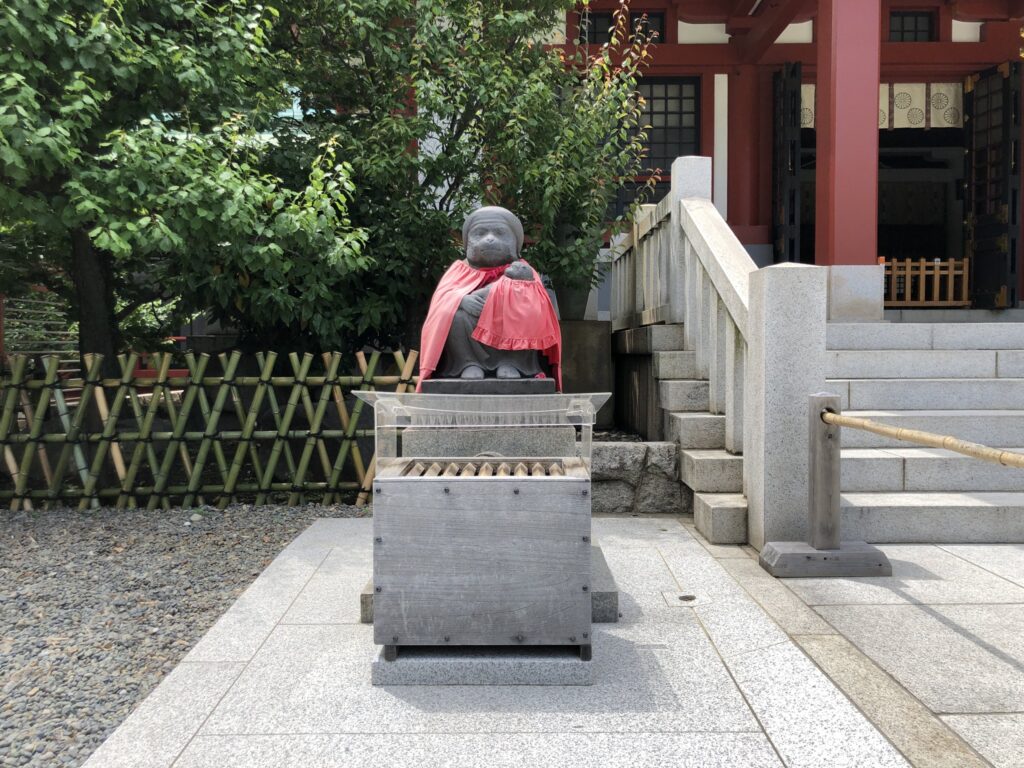Hie Jinja Shrine in Akasaka is revered by the Tokugawa family as the guardian deity of Edo Castle, and is still affectionately called “Sanno-san” by the people.The Sanno Festival, held in June, is one of the three major festivals in Japan, along with the Gion Festival in Kyoto and the Tenjin Festival in Osaka.The shrine is home to a friendly monkey guardian dog and monkey statues, and the official character of Hie Shrine, Masaru-kun, is also a monkey, creating a very relaxed atmosphere. We will introduce such Hie Jinjya Shrine.
History of Hie Jinja Shrine
The history of the shrine dates back to the Edo clan, lords of Musashi Province, who enshrined the ancestral god of Musashino as Sannomiya. When Tokugawa Ieyasu established the shogunate in Edo, Hie Shrine became the guardian deity of Edo. The deity of Hie Shrine is Ohoyamakuhi no Kami. According to the Kojiki, he is revered as the deity of Mount Hieizan (Mt. Hiei) in Omi Province (present-day Shiga Prefecture). The word “Sanno” refers to the deity who resides on Mt. Hiei. Hie Shrine, which became the Shogun’s guardian deity, is revered by the people.
In 1607, the shrine was relocated outside of Edo Castle to Hayacho, near the current National Theater. This allowed the people of Edo to visit and worship at the shrine in person. However, fires were frequent during the Edo period, and in 1657 the shrine and most of the town were destroyed by fire. Then in 1659, the 4th Tokugawa Shogun Ietsuna rebuilt the shrine at its present location.
The shrine building was constructed in the Gongen-zukuri style with vermilion lacquer coating. Gongen-zukuri is a style of shrine architecture in which the hall of worship is placed in front of the main shrine building and connected by an itabashiki stone floor, and was designated a National Treasure.
However, during World War II, the shrine buildings were completely destroyed by fire in an air raid on Tokyo. The present shrine was rebuilt in 1958.



Sights to see of Hie Jinja Shrine
Tori-i gate
The Sanno Tori-I gate is characterized by a triangular gable (roof) on top of the tori-i gate. It is said to represent the unification of the Buddhist embryonic and vajrayana realms and Shintoism.
It is called the Sanno Tori-i gate because it is a symbol of the Sanno faith. When Saicho founded the Tendai sect on Mt. Hiei, he took the name “Sanno Genpitsu Shinkun” from “Sanno Genpitsu Shinkun”, the guardian deity of the Tendai sect in Tang Dynasty China, and called Hiei’s guardian deity, Hiyoshi-daishin “Sanno Gongen”.
This is a faith that combines Shinto and Buddhism. The unique shape of the torii gate can be seen in the precincts of the branch shrine of Hie Shrine.


Monkey
There is a deep relationship between Hie Shrine and monkeys. Since ancient times, monkeys have been believed to be the link between gods and humans.
The word “saru” can be associated with the words “suru” (victory) and “magasaru” (demons leaving), and is therefore regarded as a god of luck and protection from evil. It is also believed that monkeys bring good fortune because of the phonetic reading of the word “en” (monkey), which is said to be beneficial for business prosperity and matchmaking.
In the precincts, there are a pair of guardian dogs in front of the main shrine. On the right is a father monkey statue and on the left is a mother monkey statue holding a small monkey. They are said to be beneficial for childbirth. Also enshrined here is a statue of a divine monkey dedicated in 1967 by Keigun Suzuki.
Monkey motifs can also be seen on the charms, votive tablets, and red seal pads placed at the shrine office.




A variety of designs for Ema
We will focus on the ema (votive picture tablet) that you write when you wish for help from the gods. There are many types of wooden designs and patterns on the ema at Hie Shrine, and it is hard to decide which one to dedicate. One of the designs features a monkey, and you may want to take it home with you as a token of your visit. Ema and foxes in the shape of the torii gates of the Sanno Inari Shrine, a sub temple, are also dedicated.



Access to Hie Jinja Shrine
Location:10-5, Nagatacho 2-chome, Chiyoda-ku, Tokyo
3 minute walk from Akasaka Station (Exit 2)on the Subway (Chiyoda Line).
5 minute walk from Kokkai-gijidou-mae Station (Exit 5)on the Subway (Chiyoda Line).
3 minute walk from Tameike-Sanno Station (Exit 7)on the Subway (Namboku Line and Ginza Line).
Parking around Hie Jinja Shrine
Hie Jinja Shrine Official Website
Official Site : https://www.hiejinja.net/
